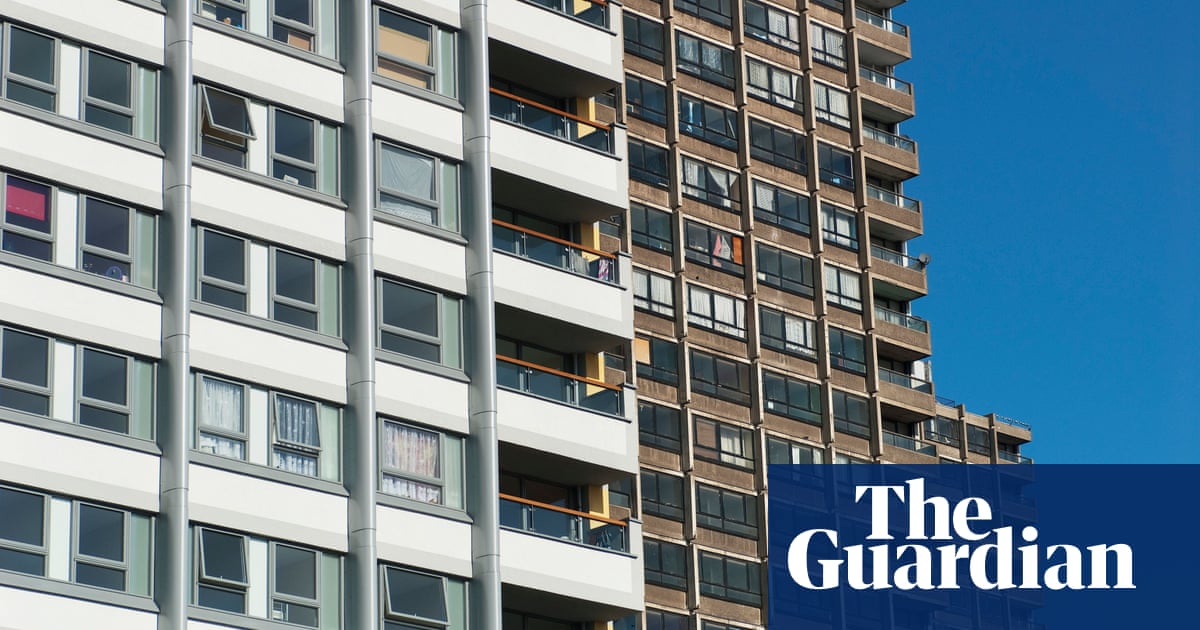
“We don’t think it’s too late. We hope that our vision might reach the offices in Hong Kong where they are deciding the future of our neighbourhood.”
In Deptford, south-east London, activist Marion Briggs is part of a group of campaigners making a last-ditch effort to change the trajectory of gentrification in the area.
Head off the high street towards the river, turn past the Dog and Bell pub and long white hoardings bring the streets of low-rise council homes to an end. This is Convoys Wharf, a huge riverside building site, once a shipyard for Henry VIII and now being prepared for 3,500 homes – the majority for private ownership. Three huge towers of 38 and 48 storeys will dominate the skyline. In the block set aside for “affordable” homes, the majority are shared ownership, the rest “affordable rent”. There are no homes at social rent levels. The development will also contain 1,800 parking spaces.
The Hong Kong-based developer Hutchison Whampoa – led by one of the world’s richest men, Li Ka-shing – has pushed relentlessly over the past decade to get these plans through against local resistance. When Lewisham council said no, Boris Johnson, then mayor of London, overruled it.
Now, at the final hour, as diggers arrive to lay foundations, local group Voice 4 Deptford has produced what it says is a “greener” vision that recognises the climate emergency. With plans drawn up by Herta Gatter, a planning apprentice, as part of her master’s degree, the group has designed a greener, more locally rooted development. It proposes weaving local history and culture into the site and replacing the towers – which activists say use more water than lower density blocks – with homes that have more shared space for children to play.
“All along the consultation was poor,” says Briggs. “Hutchison Whampoa are thinking about a certain group of people when they build – and that is young professional high earners. Developments like this are for investment, they are not intended to satisfy the needs of the local community.”
The group is not alone in hoping that a detailed “greener vision” might help it take on the complex and unbalanced planning system.
The Mayday Saxonvale project in Frome, Somerset is, its designers claim, the first community-led masterplan in the UK.
“If we succeed here, it will be the first time anything on this scale has been achieved by a community-led development,” says the project’s director, Paul Oster. He is part of a collective of experts who have produced detailed alternative plans for the brownfield mixed-use town centre site.
The proposal is to fund the building of the site through a joint venture with Stories, a socially responsible property development company.
“We think our ‘Mayday Model’ could pave the way for genuine community-led development across the UK,” says Oster.
“Our view is that the plan as it currently stands is solely designed to make large profitable returns back to the district council. We want a greener site and because we are building this on a not-for-profit plan, we can put higher levels of investment into environmental design.
“We have a huge amount of support from the community.”
The thousands of hours that go into preparing alternative plans are a huge commitment for local residents. In Totnes, Devon, local people spent 13 years trying to buy and build on land that was then sold to other buyers – they say unfairly – at the last minute.
In London many bitter battles are fought over small patches of doorstep green space. Pushing for alternative designs is not easy.
Earlier this month Sarah Correia was given two minutes to speak against proposals by Lambeth council to demolish a former care home and build two large towers that will provide more than 60 affordable homes, including 41 for social rent. Residents say it will reduce light for locals and leave the local park in shadow for most of the afternoon.
“Green spaces matter to mental health in deprived communities,” says Correia. “The towers will overshadow the park after school and on summer evenings. For our children, sitting on that green is their only holiday.”
Locals formed the group Save Lambeth Walk, producing architect-designed plans for a “greener” refurbishment of the current site, which they say would provide just as many homes without the towers.
Lambeth council says the alternative was considered and that it is constantly balancing difficult decisions when building desperately needed new homes. A spokesperson from Homes for Lambeth, the building arm of the council, said: “Consultation began back in 2020 during the pandemic and the recent proposals came just before the decision went to planning committee. We considered them and think the tower design is better than a low-rise site which would have a larger footprint.”
He added: “Homes are more important than losing an hour or two of daylight.”
Meanwhile the council looking at the Deptford project says the development will provide about three hectares of green space as well as £175,000 – under section 106 for community funding – for local parks and playgrounds.
Hutchison Whampoa did not respond to requests for comment.
In Frome, Oster believes communities could help shape genuinely sustainable development. “Up and down the country towns are facing high-density housing schemes that ignore local planning policies. Communities need a long-term vision for generations to come, not short-term profit grabs for councils and developers.”












